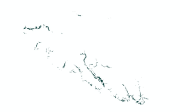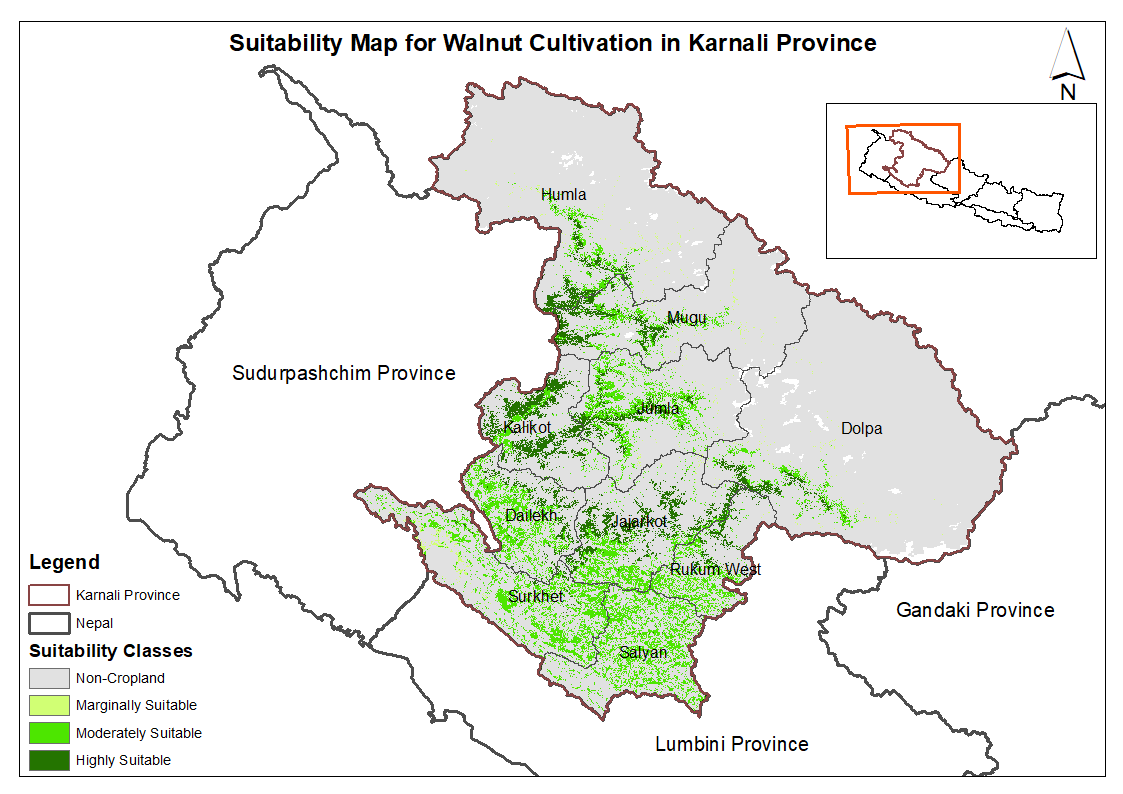30 m
Type of resources
Available actions
Topics
Keywords
Contact for the resource
Provided by
Formats
Representation types
Update frequencies
status
Scale
Resolution
-

Accelerated soil erosion is a common and environmentally destructive consequence of development in the populated trans-boundary Koshi river basin. The objective of this study was to assess assessment of soil erosion pattern and dynamic change trend of spatial distribution in erosion status between 1990 and 2010 and obtained the conservation priority map in the Koshi basin area using GIS and remote sensing. To develop soil erosion pattern revised universal soil loss equation (RUSLE) were adopted in ArcGIS environment where is the rainfall erosivity, soil erodibility, slope length factor, crop management factor and support practice factors were used a primary parameters. This study result the annual total erosion 4,35,996 ton/ha/yr in 2010.
-

Digital dataset of Himalayan Wolf habitat area of Central Karakoram National Park (CKNP) area, Pakistan. This dataset is compiled through GPS based field survey conducted in year 2008 based on baseline study volume II, draft report, by Hagler Bailly (2005) and TJ Roberts. Habitat area is identified based on the GPS survey, baseline report and potential habitat area modeling using variables like land cover, slope, DEM etc through ENFA.
-

Digital dataset of Musk Deer habitat area of Central Karakoram National Park (CKNP) area, Pakistan. This dataset is compiled through GPS based field survey conducted in year 2008 based on baseline study volume II, draft report, by Hagler Bailly (2005) and TJ Roberts. Habitat area is identified based on the GPS survey, baseline report and potential habitat area modeling using variables like land cover, slope, DEM etc through ENFA.
-

The dataset compiles the grazing routes in the key grazing areas during spring, summer and autumn.
-

Bangladesh is one of the most flood affected country in the world. The frequency, intensity and duration of floods has been increased during last few decades. Due to increased population settlements in floodplains and irregular development damage of infrastructure, crop and property has increased creating severe impact on lives and livelihood. Understanding the severity and identification of extent and types of flood damage is highly important to plan effective response. The aim of this study was to develop appropriate methodology to determine extent of flood and damaged areas in near real time basis to support operational response. We have used Sentinel-1 synthetic aperture radar (SAR) images to generate flood extend data for the year 2017.
-

Digital dataset of Agriculture Cover of Central Karakoram National Park(CKNP) area, Pakistan. This dataset is extracted from land cover dataset of 2010 created from 30m resolution LandSat imagery of 2010.
-

This dataset provides potential suitable area for cultivating barley in the Karnali Province, Nepal. It is one of the datasets produced through a land suitability analysis conducted for high value agricultural commodities in the province. The suitability analysis was based on the FAO's' land suitability framework, which evaluates the suitability of land for cultivation of specific crop using climatic, topographic and soil characteristics. The analysis was conducted by ICIMOD under the Himalayan Resilience Enabling Action Programme (HI-REAP) project to support data-driven decision making and promote sustainable and climate-resilient agriculture in Karnali Province.
-

Land cover data of Hindu Kush Himalayan region of Pakistan for 2000. This dataset is created using the LandSat 30 meter spatial resolution satellite image of 2000.
-

This dataset provides potential suitable area for cultivating walnut in the Karnali Province, Nepal. It is one of the datasets produced through a land suitability analysis conducted for high value agricultural commodities in the province. The suitability analysis was based on the FAO's' land suitability framework, which evaluates the suitability of land for cultivation of specific crop using climatic, topographic and soil characteristics. The analysis was conducted by ICIMOD under the Himalayan Resilience Enabling Action Programme (HI-REAP) project to support data-driven decision making and promote sustainable and climate-resilient agriculture in Karnali Province.
-

Land cover data of Greater Chittagong, Bangladesh for 2010. This dataset is created using the LandSat 30 meter spatial resolution satellite image of 2000.
 Metadata Catalogue
Metadata Catalogue